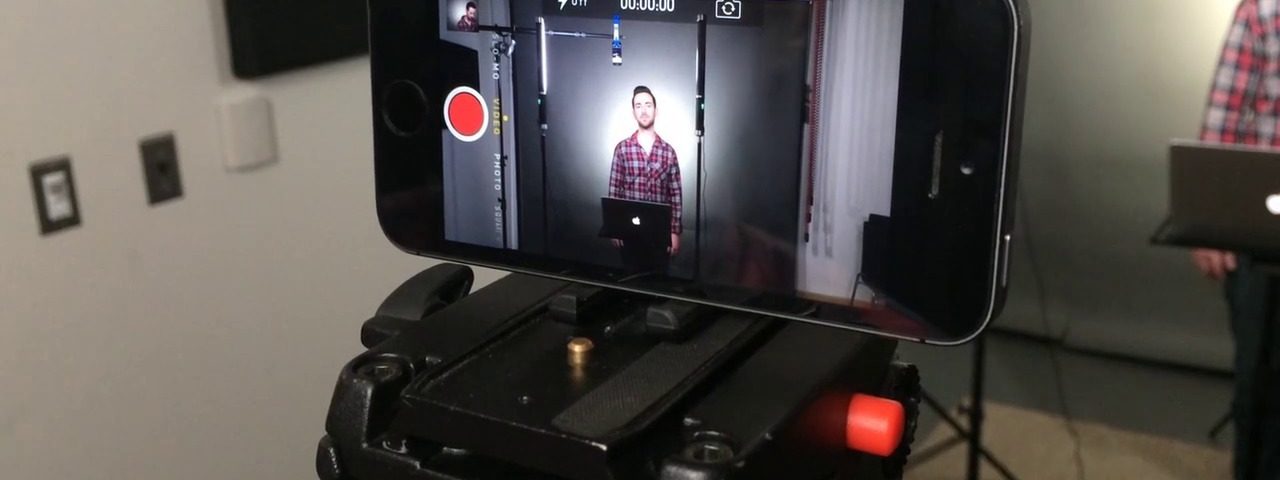Greetings!
After a fine holiday break, Mike’s Media Production Tips are back with more tips to help you create better media. After reflecting on the first couple of weeks of posts, I’ve decided that these should be smaller bites of information that will be easier to ingest and take advantage of – so far, you’ve received bits and pieces of university-level courses – all great stuff. However, if you’re just learning the basics, I might be overwhelming you with a tsunami of knowledge 🙂 Here’s to the launch of a great summer out with your cameras and mics, creating great media!
Mike
Today’s post is inspired by a weird video issue one of my clients ran across the other day. She shoots her own teaching videos using a newer iPhone mounted on a tripod. With a little training in lighting, she has learned to record professional looking video pieces. As we watched her latest recording, the video appeared to have a slow vertical pulsation to it, almost as if we were viewing the phone under water (no – this is not one of those new waterproof Galaxies being tested 🙂 ) It looked like the video was waving, and continued through both clips that she captured. She had set up her equipment in the same location that she has worked before…
So, what was going on that particular day? Back in the analog video days, I would have suspected a power supply issue, or perhaps some sort of magnetic field generated by electronic equipment. But those issues do not seem to appear in today’s digital world. I had a clue, though. Having viewed the raw footage from several of her sessions, I’ve noticed some interesting distortions in the video image as she walks away from the camera (phone). Despite using a stable tripod and mount, the floor in her work space flexes as most wooden floors do. This new wavy look bares some resemblance to the distortions I’ve seen when the floor bounces the camera.
OK – yet, what would cause the wavy distortions to continue over a long period of time? Something must be vibrating the camera constantly. That’s where it clicked for me. What was new on this day? The temperature outside was very warm, and my client had the air conditioning on. All I had to do at that point was go stand where the camera is located, and I could feel the vibration of the A/C in my feet. Imagine those vibrations traveling up a solid tripod, possibly being amplified and vibrating the tiny lens just enough to create this effect. Waviness deluxe!
There is another reason to avoid using A/C while recording your video or audio pieces. Even with solid floors, the A/C noise will be heard in the recording. Tripod or not, your mics will pick up the noise created by most air conditioning units. It might not be heard when playing it back on your phone or laptop, but play it through a higher quality speaker and the hum will be quite noticeable.
This is why TV and recording studios usually have cement floors and specially designed A/C systems. These are the fundamentals that separate a true studio from your living room… but we don’t all have access to a studio. Therefore, we do the best we can to be aware of issues such as air conditioners and heating units and control them as best possible. Plan to shoot your video segments during the cool part of the day, or run the A/C hard and turn it off while recording.
Because staying cool in media production has a lot more to do with capturing great source material than avoiding a little sweat 🙂
Back with more tomorrow!


Well, well, well . . .being “that” client, I especially enjoyed how your blog included our current work. Life is grand, real-life recordings are more, well, er, real and i so appreciate the upgrade of information and am ready to make next recording time less hot (night time), no refrigeration required, and, less background noise at night than in day time. So much fun doing this walk through all things media Production. . . with you at the helm much of the time. Thanks Mikhael (my name for Mike Gantenbein which he loves :0)
You were quick to notice! 🙂 Thanks for reading my blog.
In my home studio, the blower for the heat pump is at the entrance to the room… any time a microphone is on, the heat pump gets shut off. When it gets too cold, it means it’s time for a break 🙂